When to use a humidifier for baby?
Being a new parent can be taxing. It comes with a lot of challenges to keep the baby comfortable. Most new parents go through an anxious preparatory phase of getting the baby’s room ready. Thanks to the latest technology, many new gadgets are available in the market to keep the baby’s nursery a safe space. The debate about having a humidifier for the baby’s room also runs alongside. Many parents fund it unnecessarily, but we are here to see how a humidifier in your baby’s nursery can be of help.
In this article, we will discuss when to use a humidifier for baby. Having a humidifier in your baby’s room might not be required if the humidity levels in your home are maintained round the clock. But if suspect dry air, dry skin condition, and other issues with less moisture that is causing discomfort to your young children, it is best to invest in a humidifier in your baby’s room. Let’s get started!
How a humidifier can benefit a baby?
Many homes consider it as important to have a humidifier in a baby’s room as having a white noise machine. This is right for several reasons as humidifiers work to add the much-needed moisture in a room. If you have a young child and you are silently wondering how to help them fall asleep better and stay asleep, you must take a look at the following benefits that come with using humidifiers.
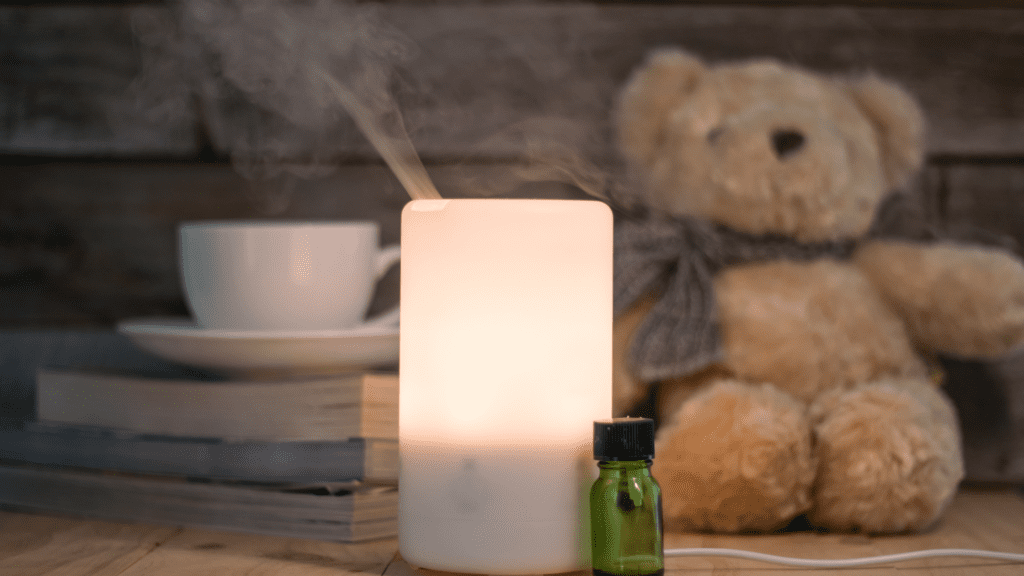
Keeps baby’s skin protected
Itchy skin is uncomfortable and difficult to handle. It can be even harder for a baby to endure. Having humidifiers is a great way to protect the baby’s skin from dryness. Once babies are out of the amniotic fluid after 9 months, they need time to adapt despite the regular moisturization.
It is important to maintain the humidity level in the baby’s room at a healthy level to avoid dry skin problems. The baby’s skin can develop rashes with dry air. This can be worse during the winter months with cold and dry air while the heating element or system is On.
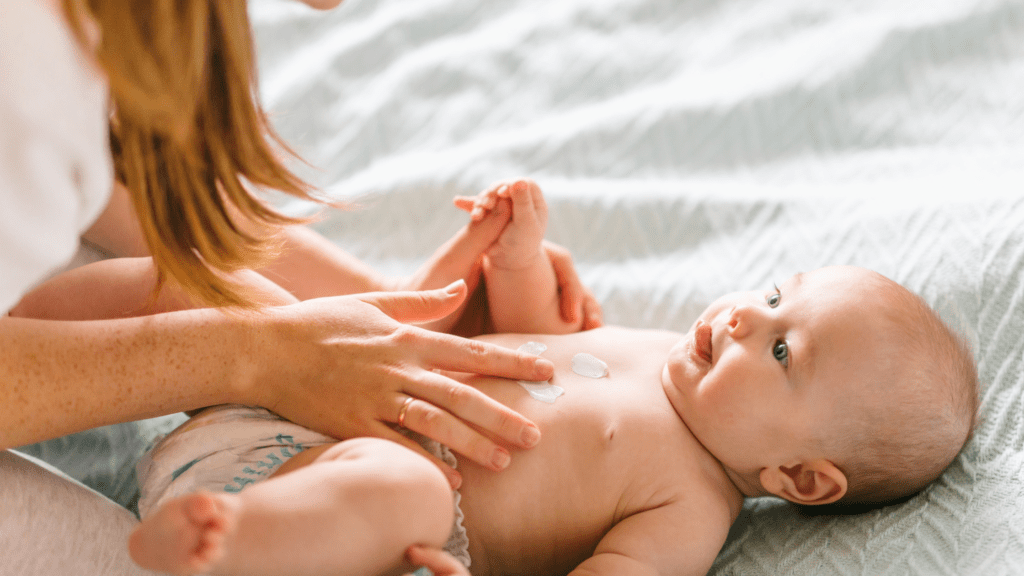
Summer months can also pose trouble if the air conditioner dries out air moisture. Any skin condition that is common in newborns or young children like, cradle cap and eczema can also be made easy on the recovery process by using humidifiers.
Prevents cold symptoms and chest congestion
Despite all efforts to protect your baby or young child, they might run into cold symptoms, stuffy noses, congestion in nasal passages and chest, chapped lips, or even more frequent sore throats. It can take a while for babies to recover, especially when they cannot be given medication.

Humidifiers can help young children and babies to have an easy time sleeping comfortably in the baby’s room while they struggle with chest congestion, dry sinuses, dry nasal passages, stuffy noses, chapped lips, or even more frequent sore throats. By simply adding the much-needed moisture to the baby’s nursery, you will be able to help the child sleep comfortably and stay asleep by clearing the nasal passages.
Promotes peaceful sleep
Having humidifiers in any room will add moisture, keep white dust mites build-up away, balance the humidity level, and moisten the nasal passages. These are factors that will help any person to stay asleep without getting disturbed by low humidity levels or dry air.
Having a humidifier for your child in the room will help them to fall asleep quickly and peacefully. Having enough moisture in the air improves the comfort of the room. By easing symptoms of dry air like itchy skin, dry sinuses, congestion, chapped lips, and dry nasal passages, and keeping away mold growth, and harmful bacteria, you can provide any environment of absolute comfort for your children.
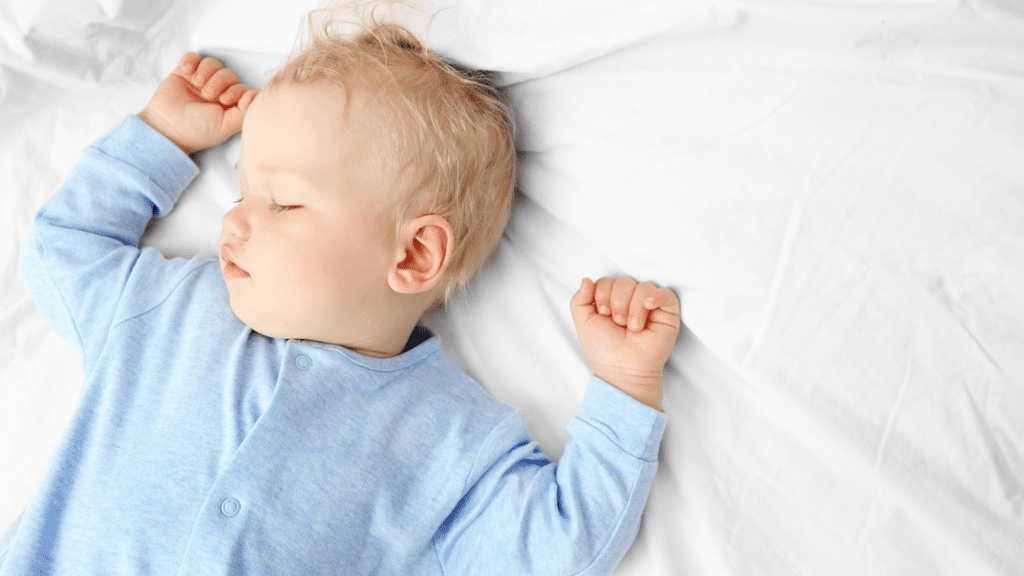
Some parents are happy to invest in a humidifier for their child’s room because it can double up as a white noise machine as well. The gentle humming that a humidifier generates can help to lull the child to sleep.
Keeps the allergens away
As aforementioned, low moisture environments support the growth of allergens. Harmful bacteria and viruses, and mold growth can take place even in low humidity level zones. Although mold growth finds excess moisture and dampness favorable for growth, a dry climate like winter mold and cold air can support the dispersion of the mold spores.

Meeting the ideal humidity level in the room will help to prevent mold growth. Invest in the right humidifier for your child to keep away bacteria, mold, dust mites, and other allergens not just during the winter months but all year round.
How should you choose a baby humidifier?
Arriving at the right humidifier to purchase can be confusing. The two main categories of humidifiers are warm mist humidifiers and cool mist humidifiers. In order to decide if a warm mist humidifier or a cool mist humidifier will be the best choice for your child, you must first be fully aware of the features of both warm mist humidifiers and cool mist humidifiers.
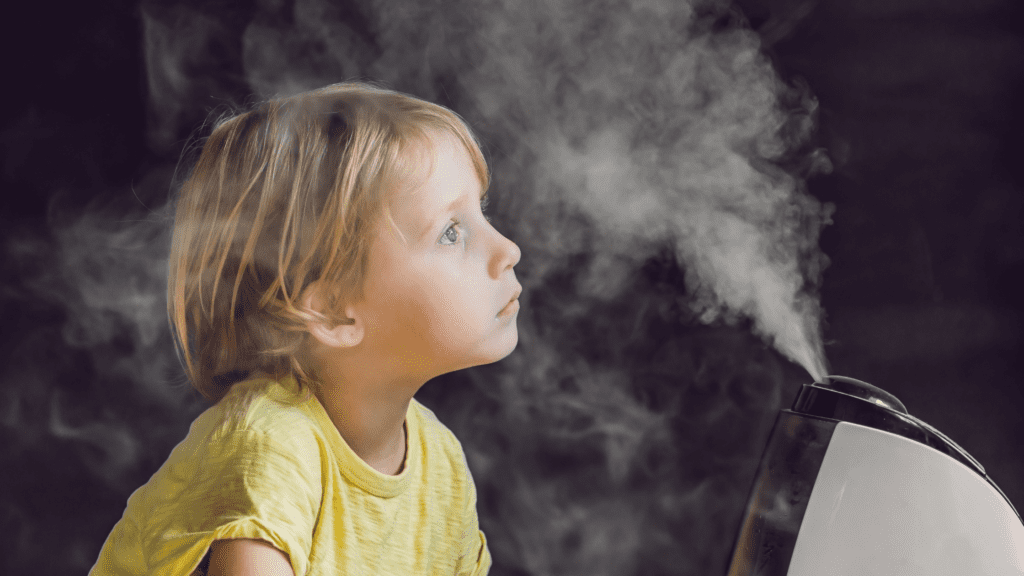
Warm mist humidifiers
Warm mist humidifiers as the name suggests have warm mist involved. Also known as steam vaporizers, this type of evaporative humidifier has a heating element inside the equipment to boil the water that is extracted from the water tank. Additionally, warm mist humidifiers are a lot quieter than cool mist humidifiers.
The advantages of a warm mist humidifier are many. When you use a humidifier that emits warm mist you can be assured of extra warmth in the room. Warm mist humidifiers are also sturdy and durable and a lot unlikely to break down easily. Their design is simple and most warm mist humidifier models are less expensive than cool mist models.
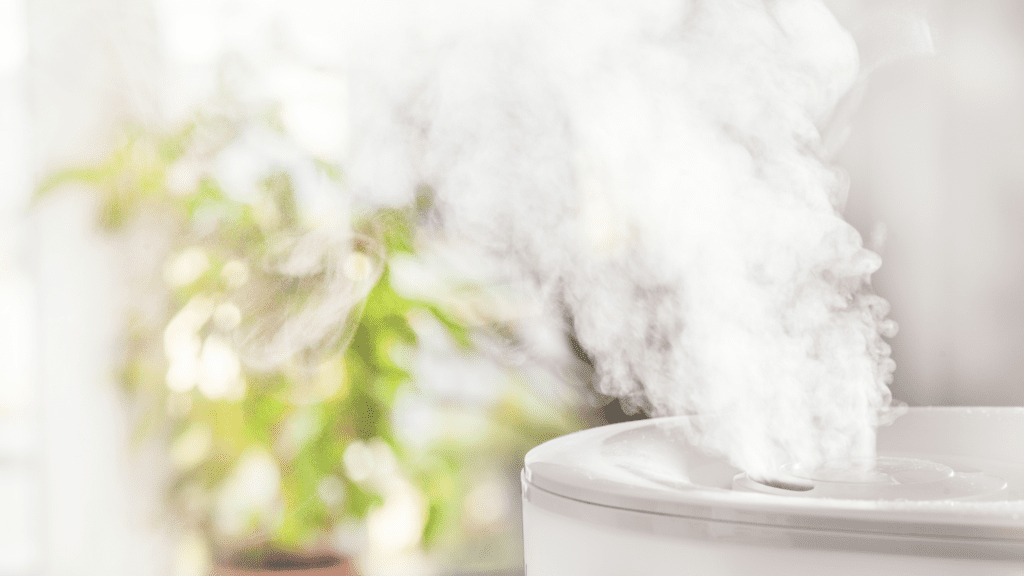
The disadvantage of having a warm mist humidifier in the same room as the child is in is the hot steam and hot water tank. The hot water tank is a burn risk. Any accidental tipping over of the hot water tank can lead to severe burns. Being a burn risk is the only probable disadvantage to consider when it comes to these models. Getting too close to the nozzle through which the hot steam comes out is also a hazard.
Another area of caution is the cord of the unit. One must keep it out of the floor and out of any region that the child might be able to tip the cord over. Using hot water can be of comfort, but not when unattended. It is also common for pediatricians to recommend warm mist models over the cool mist, because of the steam’s ability to kill bacteria.
Cool mist humidifiers
A cool mist humidifier on the contrary gives out the cool mist. Since a cool mist humidifier does not pose any burn risks, they are a safer option. The cool mist is also an excellent option to add moisture to the air and environment, keeping babies free from clogged nasal passages, congestion, dry lips, dry skin, and other symptoms of low humidity levels.
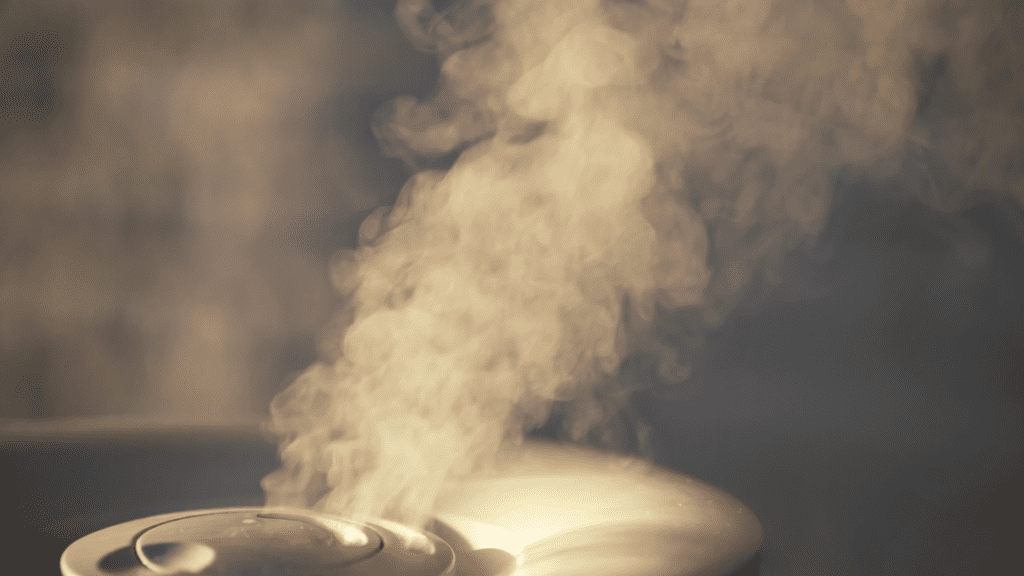
The area that needs attention while using a cool mist humidifier is the water reservoir. You must follow the cleaning instructions thoroughly to prevent fungal growth and bacteria. It is also important to pay attention to the type of water used. Hard water and tap water must be strictly avoided. Using hard water and tap water are not the ideal options for the internal parts of the unit. Distilled water on the other hand is the right choice for a cool mist humidifier.
Distilled water is pure and will not disperse any further impurities into the air. Hard water and tap water on the other hand can lead to the formation of mineral deposits and white dust mites. These on spreading via the cool mist across the room can pave way for different allergies of the skin and respiratory system.
Evaporative humidifiers and Ultrasonic humidifiers
Under the cool mist category, you will find evaporative humidifiers and ultrasonic humidifiers. The ultrasonic design is quiet, and small, and uses sound vibrations that break the water droplets into a cool mist. Although these are an advanced option, they are capable of emitting white fine dust.
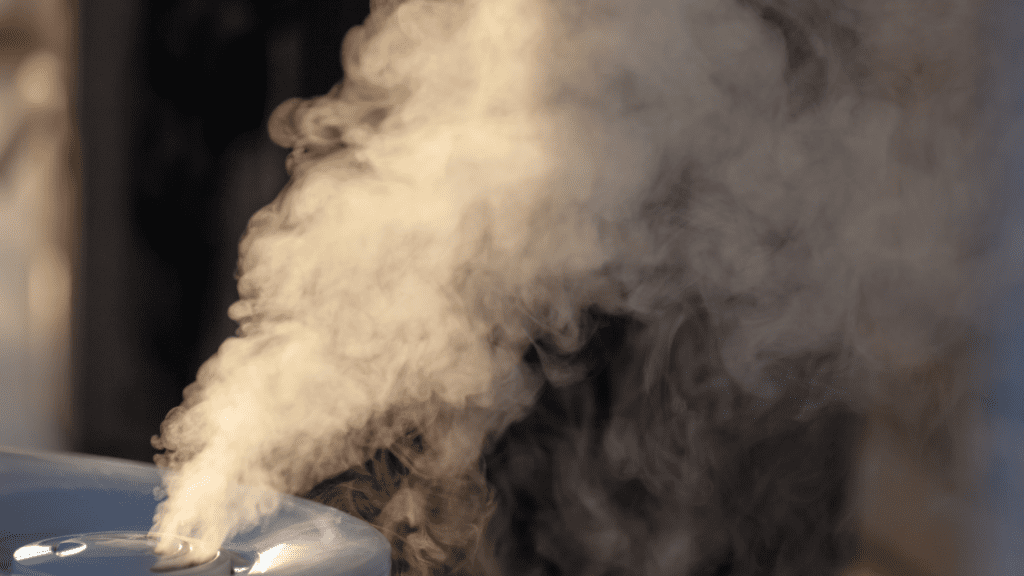
Evaporative models can be noisier and occupy more space than ultrasonic units. Make a careful study of the features and do not forget to consult with your child’s pediatrician before you use a humidifier for their room.
Best Baby humidifier according to us:
If you are silently wondering about investing in a humidifier for your home but doubt which humidifier in your baby’s room would perform to its fullest potential, worry not for we are here to assist you.
The Pure Enrichment MistAire Ultrasonic Cool Mist Humidifier is the best unit available in the market. The features built into this design ensure excellent and seamless performance. You can rest assured that maintaining the right level of air moisture and humidity will be taken care of.
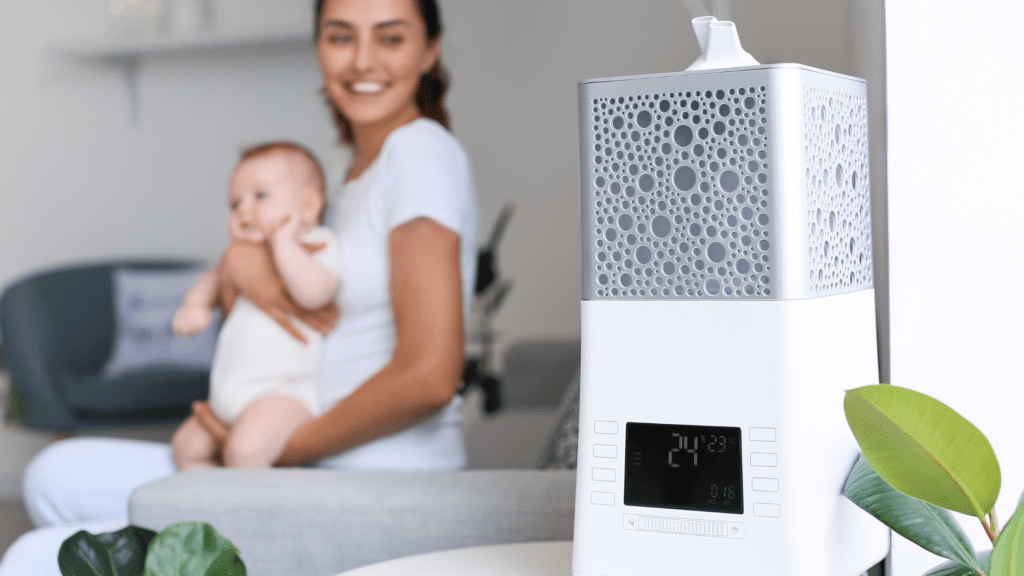
The Pure Enrichment MistAire Ultrasonic Humidifier is the best option for those looking for even up to 25 hours of continuous operation. As MistAire humidifiers work, the dry environment is constantly transformed into a moist one. Certain humidifiers might not able equipped to cover a large space despite their performance, but MistAire can effectively cover an area of up to 250 square feet which is suitable for medium to large rooms.
The other special features in this unit that make it one of the most recommended models in the market are; high and low-speed settings, 360° mist nozzle, whisper-quiet operation, optional night light, 1.7-liter water tank, automatic shut-off feature to turn Off the humidifier when the water level is low or the tank is removed, etc. You can be assured to help your child stay free from (or minimize) trouble with dry sinuses, phlegm build-up, dry skin, and chest congestion in the winter and summer months.
Are you convinced this is the humidifier your home needs to keep the humidity level under check? Visit Amazon.com to bring home this unit at the best offer price.
How close should humidifier be to baby?
The right placement for any device that will have an impact on the humidity level of the area is important. It goes without saying that the humidifier must be placed out of the child’s reach. The electrical cord and the unit by itself must be kept away from any place the child will be able to access.
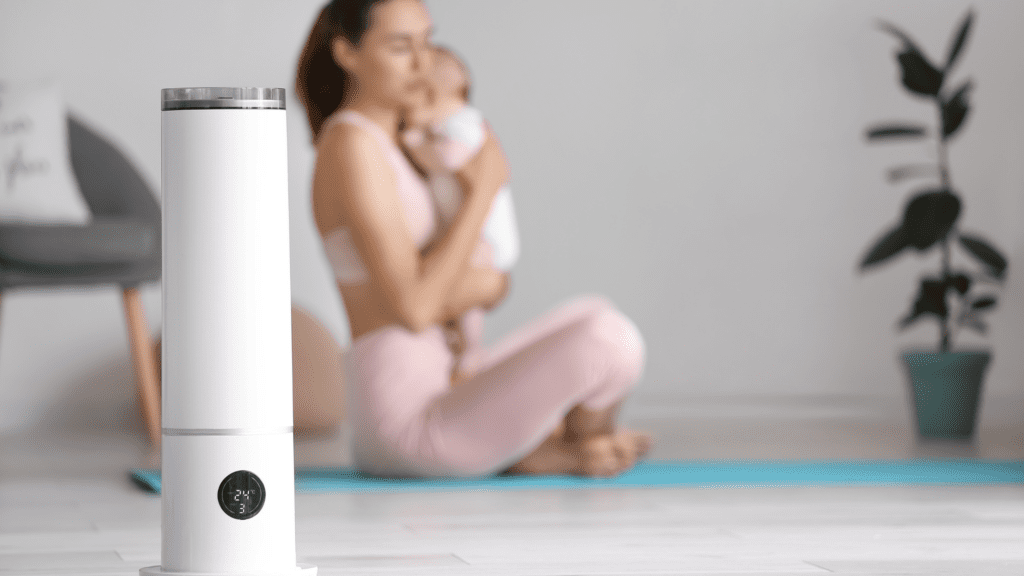
It is advised to keep the unit 2 feet above the ground. This will prevent damage to hardwood floors and other furniture nearby. Since humidifiers will increase the moisture content of the space they are placed it, it is suggested that you pay attention to the immediate surroundings.
How to maintain the humidifier for baby room?
In order to get the best performance from the unit, one must invest time and energy into maintaining the humidifier. Read all the cleaning instructions mentioned in the user manual and follow them consistently. A dirty humidifier is the source of many microorganisms. A water reservoir that is poorly maintained will lead to fungal and bacterial build-up.
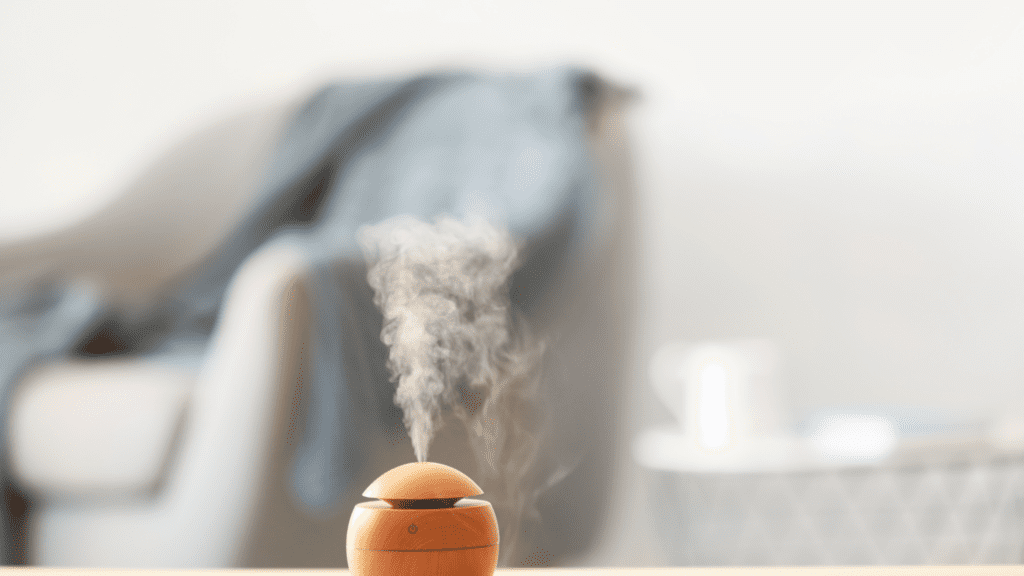
- If you want your humidifier to deliver its best functioning in maintaining the ideal humidity level, you must make sure that the unit is cleaned often or as required.
- When you use a humidifier make sure it is filled with distilled water. Using distilled water will prevent mineral build-up in the water reservoir and in the air.
- Use soapy water or hydrogen peroxide to thoroughly clean the tank.
- Using a soft cleaning brush will make it easy to remove stubborn residue.
- Certain humidifiers will have an anti-bacterial filter. This filter needs regular cleaning to truly keep the bacteria away from the air and water.
How can you humidify baby’s room without a humidifier?
Adding moisture to the air without using a humidifier is also possible. However, this will not be as effective as using a humidifier. Humidifying a place without a humidifier can be done by keeping an open bowl of water, adding indoor plants to the room, or boiling a kettle of water.
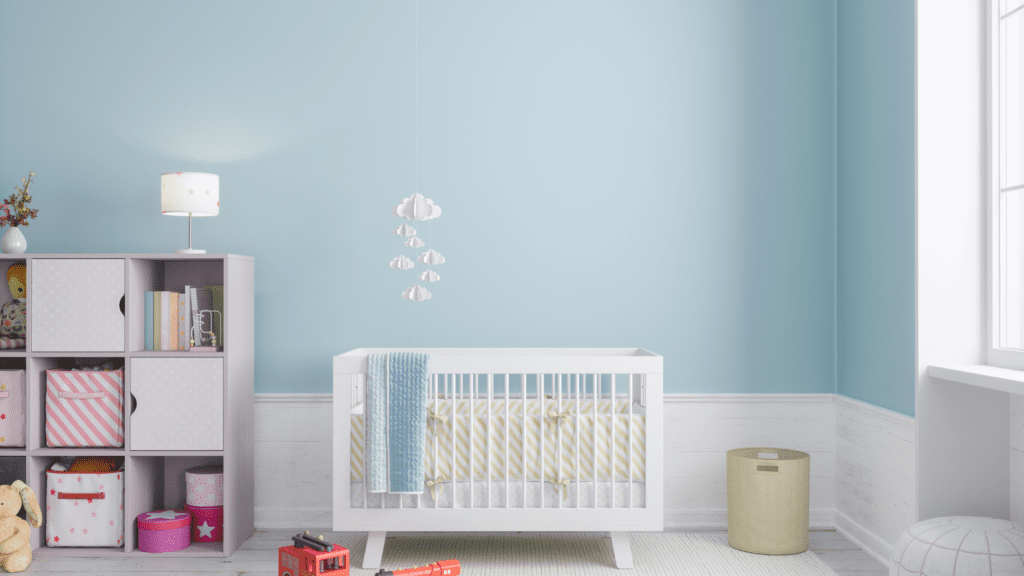
FAQ Section
1. Can I use a humidifier in the baby’s room all night?
Yes, you can be provided you have checked with your child’s pediatrician if you can use a humidifier in their room. You must also have a professional take a look into the safety measures on the humidifier and the placement of the unit.
If you use a humidifier too close to the cot it is unhealthy for babies. An increase in saturation will pave way for mold and mildew.
2. Does a humidifier help with cough for the baby?
Yes! When you use a humidifier it will remove the side effects of having dry air in the environment. Any congestion in the chest, cough, and cold can be made better when you use a humidifier. The moisture in the air will moisten the throat and nasal passage.
3. Do pediatricians recommend humidifiers?
The American Academy of Pediatrics (AAP) suggests that you invest in the right humidifier for your baby. They recommend a cool mist humidifier that is fully equipped with safety features without any compromise.
Wrapping Up
With this, we have reached the end of the article. We trust you have a clear idea of when to use a humidifier for babies and the type of unit to purchase. Share with us your experiences of using humidifiers for your child’s room and your favorite unit.

About The Author
Olivia — a self-confessed air quality addict — is a home climate enthusiast, fresh air advocate, and someone with deep personal experience and knowledge about mold extermination. Her work was mentioned in countless notable humidity publications. Previously she was an editor at Mold Remediation.